Debosmita Bhaumik
Evolutionary Level Repair
Jun 24, 2025Abstract:We address the problem of game level repair, which consists of taking a designed but non-functional game level and making it functional. This might consist of ensuring the completeness of the level, reachability of objects, or other performance characteristics. The repair problem may also be constrained in that it can only make a small number of changes to the level. We investigate search-based solutions to the level repair problem, particularly using evolutionary and quality-diversity algorithms, with good results. This level repair method is applied to levels generated using a machine learning-based procedural content generation (PCGML) method that generates stylistically appropriate but frequently broken levels. This combination of PCGML for generation and search-based methods for repair shows great promise as a hybrid procedural content generation (PCG) method.
Lode Enhancer: Level Co-creation Through Scaling
Aug 03, 2023Abstract:We explore AI-powered upscaling as a design assistance tool in the context of creating 2D game levels. Deep neural networks are used to upscale artificially downscaled patches of levels from the puzzle platformer game Lode Runner. The trained networks are incorporated into a web-based editor, where the user can create and edit levels at three different levels of resolution: 4x4, 8x8, and 16x16. An edit at any resolution instantly transfers to the other resolutions. As upscaling requires inventing features that might not be present at lower resolutions, we train neural networks to reproduce these features. We introduce a neural network architecture that is capable of not only learning upscaling but also giving higher priority to less frequent tiles. To investigate the potential of this tool and guide further development, we conduct a qualitative study with 3 designers to understand how they use it. Designers enjoyed co-designing with the tool, liked its underlying concept, and provided feedback for further improvement.
Lode Encoder: AI-constrained co-creativity
Aug 02, 2023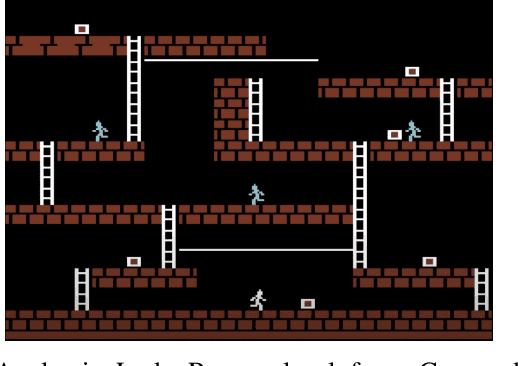
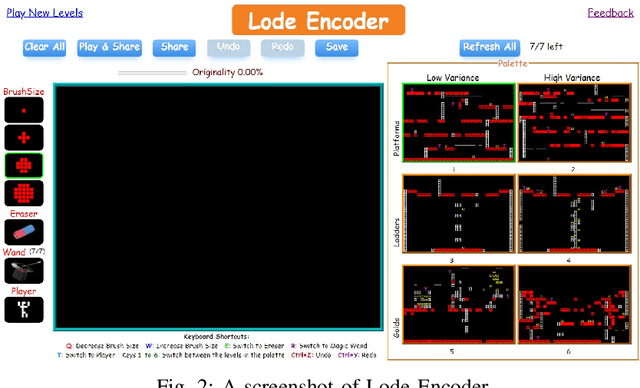
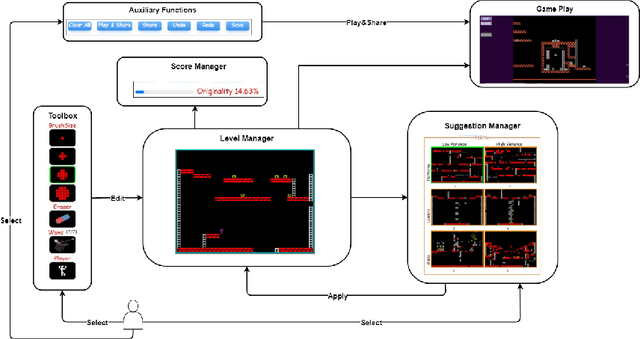
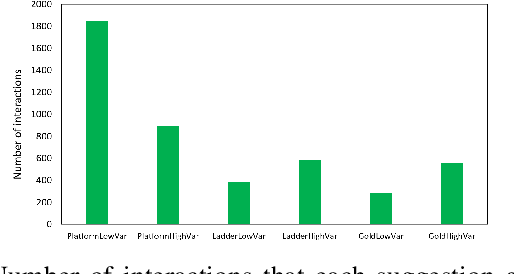
Abstract:We present Lode Encoder, a gamified mixed-initiative level creation system for the classic platform-puzzle game Lode Runner. The system is built around several autoencoders which are trained on sets of Lode Runner levels. When fed with the user's design, each autoencoder produces a version of that design which is closer in style to the levels that it was trained on. The Lode Encoder interface allows the user to build and edit levels through 'painting' from the suggestions provided by the autoencoders. Crucially, in order to encourage designers to explore new possibilities, the system does not include more traditional editing tools. We report on the system design and training procedure, as well as on the evolution of the system itself and user tests.
Predicting Personas Using Mechanic Frequencies and Game State Traces
Mar 24, 2022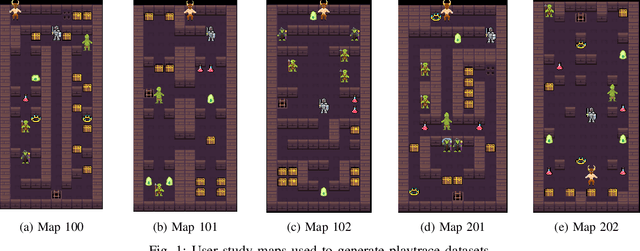
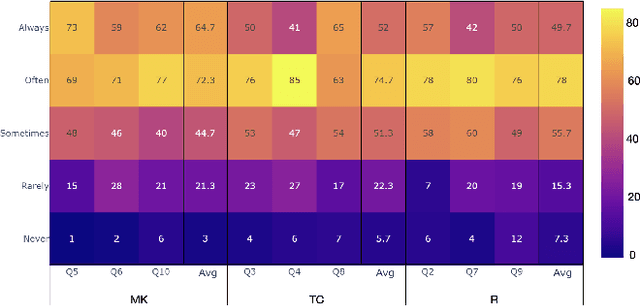


Abstract:We investigate how to efficiently predict play personas based on playtraces. Play personas can be computed by calculating the action agreement ratio between a player and a generative model of playing behavior, a so-called procedural persona. But this is computationally expensive and assumes that appropriate procedural personas are readily available. We present two methods for estimating player persona, one using regular supervised learning and aggregate measures of game mechanics initiated, and another based on sequence learning on a trace of closely cropped gameplay observations. While both of these methods achieve high accuracy when predicting play personas defined by agreement with procedural personas, they utterly fail to predict play style as defined by the players themselves using a questionnaire. This interesting result highlights the value of using computational methods in defining play personas.
Tree Search vs Optimization Approaches for Map Generation
Mar 27, 2019
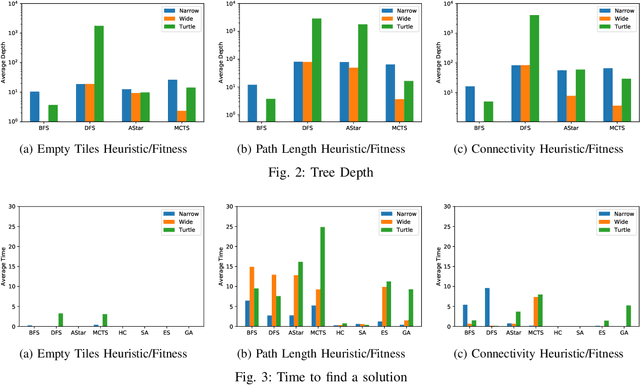
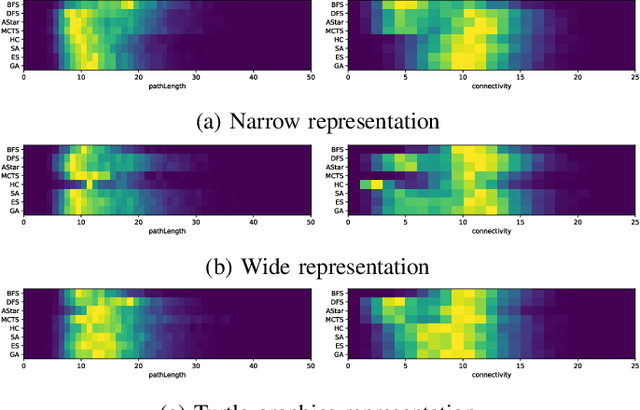
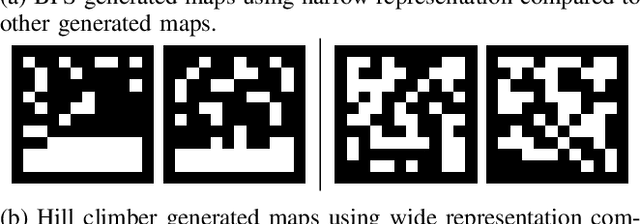
Abstract:Search-based procedural content generation uses stochastic global optimization algorithms to search spaces of game content. However, it has been found that tree search can be competitive with evolution on certain optimization problems. We investigate the applicability of several tree search methods to map generation and compare them systematically with several optimization algorithms, including evolutionary algorithms. For purposes of comparison, we use a simplified map generation problem where only passable and impassable tiles exist, three different map representations, and a set of objectives that are representative of those commonly found in actual level generation problem. While the results suggest that evolutionary algorithms produce good maps faster, several tree search methods can perform very well given sufficient time, and there are interesting differences in the character of the generated maps depending on the algorithm chosen, even for the same representation and objective.
 Add to Chrome
Add to Chrome Add to Firefox
Add to Firefox Add to Edge
Add to Edge